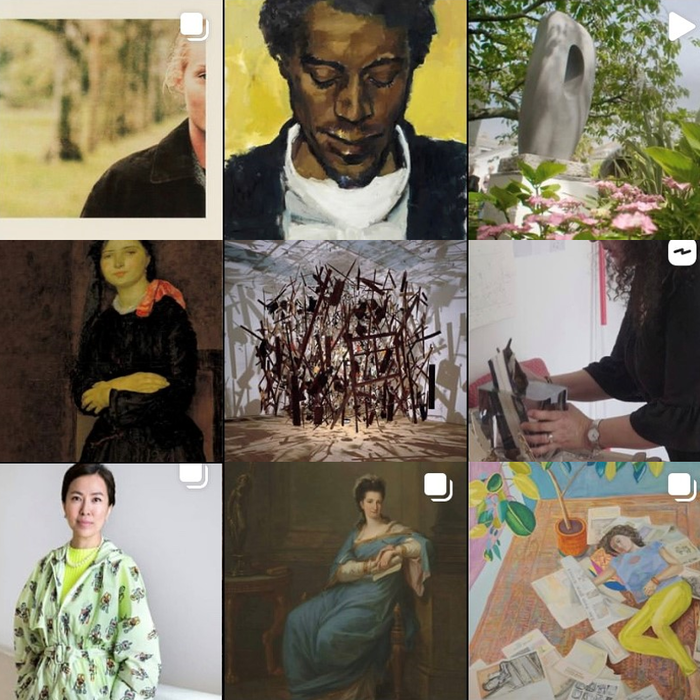Will the arts survive? Only if they democratise
Mattie O’Callaghan considers where the current crisis leaves the arts industry, and argues it should emerge more inclusive
The arts as an industry are undoubtedly suffering. So many are wondering whether it will survive. Yet, despite this, an online explosion of art material is being uploaded, including tours of the National Gallery, free musical performances from Andrew Lloyd Webber, and shows from the National Theatre. In addition, more people are taking part in the making of art, revealing the powerful effect creativity can have on wellbeing and communities. One thing is clear: if the art world is to continue to survive, it must continue to democratise beyond lockdown.
It has always been said that to become an artist is to suffer through poverty - but why have we let this situation continue?
Art has long been heralded as a luxury for the elite, and the prices and exclusivity of key events evidence this. Entrance to exhibitions at the V&A costs around £24 and theatre tickets are easily over £100. Yet, even with this money, the arts industries continue to struggle. Why? Part of this comes from the critical underfunding of the arts by the UK government: austerity measures quickly led to the closure of local museums and arts centres. This has allowed only the major, well-funded organisations in the big cities to survive. But how do you access art if you do not live in London? Lockdown has made art experiences universal, and once it is over more money must be invested, especially in local art centres across the country.
It has always been said that to become an artist is to suffer through poverty - but why have we let this situation continue? Art is essential for connection, and, more recently recognised, our mental health, so why can we not guarantee secure, stable incomes for artists and make it a viable career? The Arts Council has significantly increased its funding opportunities for artists during lockdown, and this must continue afterwards. This will open the doorway for those from marginalised and disadvantaged backgrounds who do not have the resources and support needed. This will affect the art that is made, opening up a diverse and vibrant sector of different experiences and thus connecting and speaking to more people.
Instagram provides a platform to showcase a whole host of diverse artists
Ableism remains a strong issue, particularly for galleries: the 2019 Olafur Elliason exhibition had no ramp to enter into a walk-through cylindrical work. Tate later responded by filming the inside, but, if climate change is going to disproportionately impact disabled people, how can an art exhibition on climate change not be fully accessible? Having a chronic pain condition myself, I have dreaded long queues, heavy crowds and little or uncomfortable seating. Since lockdown, I’ve enjoyed being taken round Andy Warhol’s exhibition at Tate Modern from the comfort of my own bed. For those with anxiety, mental health struggles or disabilities, the lockdown art world has opened up new opportunities. Galleries must continue to publish films of exhibitions, install comfortable seating, make spaces accessible, and create quiet viewing times, so that art is widely available to all.
Intellectualisation of the art world continues to come at a high cost, yet more of us are seeing that art is not a luxury, but an important creative activity in whose consumption and production we can all take part. The old attitude rests on the idea of western knowledge being more valued than our own cultures and knowledges, which is why white men have dominated the art world. At Tate Britain, The White Pube reported how visitors had to pass an incredibly offensive, racist painting in order to enter the Steve McQueen exhibition. Questions have been continually asked about the lack of diversity and representation of female, BAME, disabled, and working-class artists since the Guerrilla Girls, and in Arts Council reports. Instagram and other social media, however, provide a platform in lockdown to showcase a whole host of diverse artists who can self-publish their work or take part in online exhibitions, without institutional prejudice preventing them from doing so.
It is clear that you definitely do not need an art history degree to appreciate art - and lockdown has democratised the production of art too. In Grayson Perry’s Art Club on Channel 4 members of the public are invited to send in work on a weekly theme to end up in a real exhibition, when this is permissible. With more time on our hands (for some) and ideas needed to entertain families, art is no longer for middle class Sunday brunchers, but a fundamental activity to connect to ourselves and to communities. The rainbows made by school children across the country displayed in windows have brought enormous joy to so many as we look for hope and community in this time.
Lockdown has shown us that art should not be a luxury, but a key part of our lives. The democratisation of art online has opened up incredible opportunities to support and engage diverse audiences in its production and consumption. If the arts industry is to survive, it must adapt by receiving more funding, making itself more accessible, challenging its institutional racism and prejudice, and showing that all of us can do art.
 News / Eight Cambridge researchers awarded €17m in ERC research grants27 December 2025
News / Eight Cambridge researchers awarded €17m in ERC research grants27 December 2025 News / Clare Hall spent over £500k opposing busway 24 December 2025
News / Clare Hall spent over £500k opposing busway 24 December 2025 Comment / League tables do more harm than good26 December 2025
Comment / League tables do more harm than good26 December 2025 Comment / The ‘class’ of Cambridge24 December 2025
Comment / The ‘class’ of Cambridge24 December 2025 News / Caius mourns its tree-mendous loss23 December 2025
News / Caius mourns its tree-mendous loss23 December 2025









